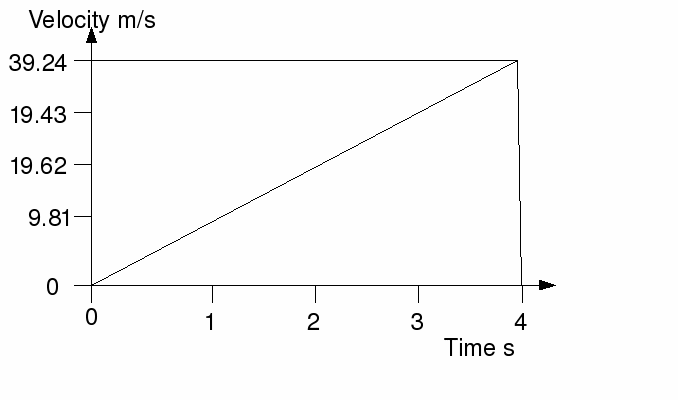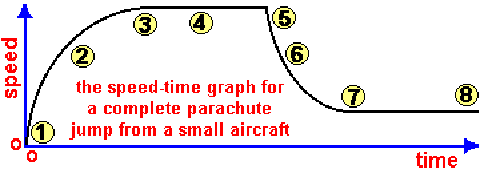In the absence of air resistance any body falling freely under gravity falls with a constant acceleration of![]() A graph of speed against time is shown below for the situation where there is no air resistance. The velocity increases by
A graph of speed against time is shown below for the situation where there is no air resistance. The velocity increases by![]() for every second that passes.
for every second that passes.

The acceleration above is equal to the gradient of the graph =![]() The only force acting on the object whose motion is shown above is gravity. In reality gravity is not the only force acting. Air resistance is a force acting on any falling body – in fact any body moving through the air – and the force of air resistance increases as the velocity increases. The diagram below shows a parachutist falling.
The only force acting on the object whose motion is shown above is gravity. In reality gravity is not the only force acting. Air resistance is a force acting on any falling body – in fact any body moving through the air – and the force of air resistance increases as the velocity increases. The diagram below shows a parachutist falling.

-
The parachutist jumps from the aircraft. He parachute is closed and the is no air resistance acting vertically.
-
As the parachutist starts to accelerate the force of air resistance starts to increase. His speed is increasing but his acceleration is slowing.
-
As the parachutist falls faster the air resistance increases more. The acceleration is decreasing to zero.
-
The force of gravity equals the force of air resistance. There is no resultant force and the parachutist is not accelerating.
-
The parachutist opens his parachute. The force of air resistance shoots up but the force of gravity stays the same. The parachutist starts to decelerate rapidly.
-
As the parachutist slows down the force of air resistance decreases. The resultant force decreases, hence the gradient of the graph and the acceleration both decrease.
-
The force of air resistance now equals the force of gravity. The parachutist is falling with a constant speed – he has reached his terminal velocity.
-
The parachutist falls with a constant speed until he reaches the ground.